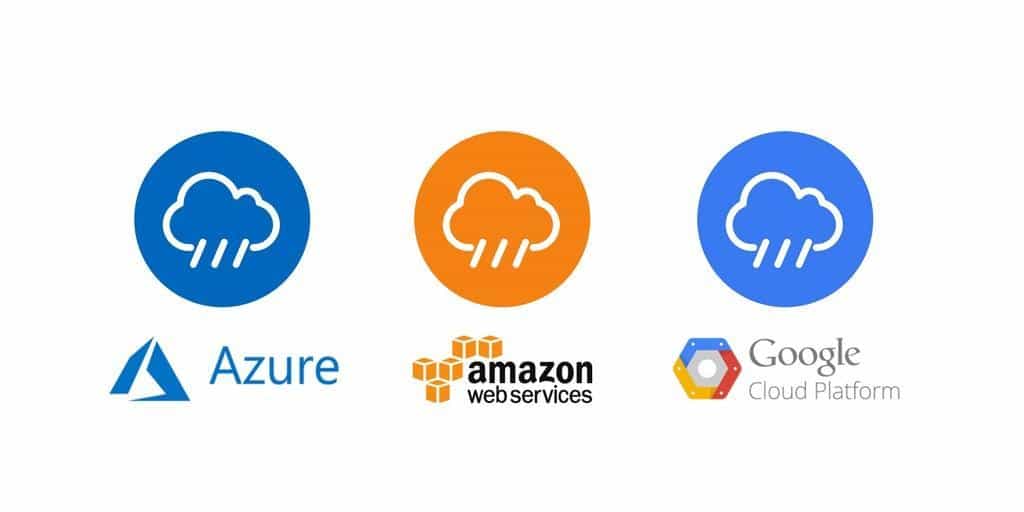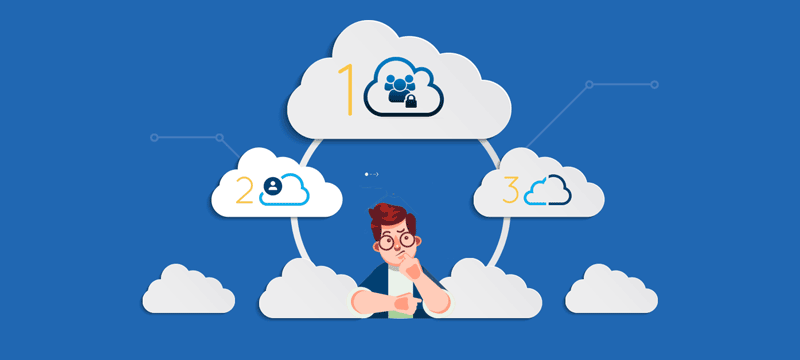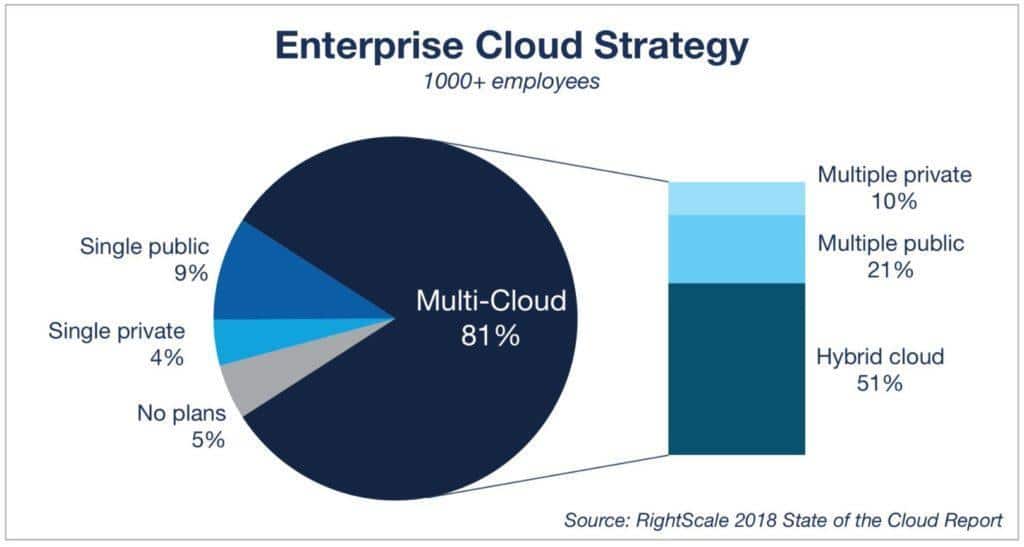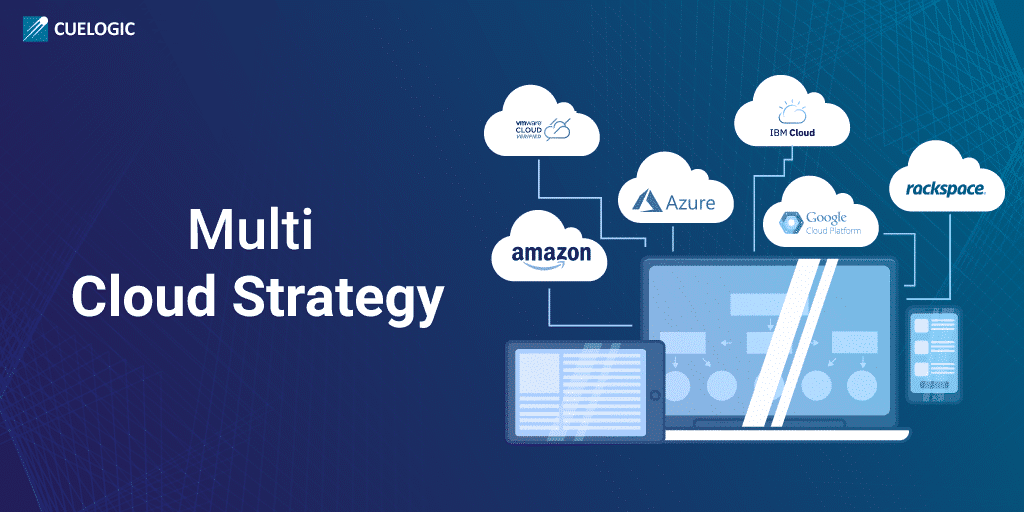What is Cloud Computing?
Cloud Computing is the delivery of hosted computing services such as storage, servers, databases, networking, software applications, big data processing, analytics or intelligence over the Internet.
The key differentiating factor between a cloud service and that of a traditional web-hosted service is that cloud services are On-Demand Basis. You can take as much or as little as you want from a service. Cloud service providers changed the game with the Pay-as-you-go model. This way, you only pay for the services you use, corresponding to the quantity in which you or your customers use these services.

You save on the significant investments for purchasing and maintaining in-house servers, data warehouses, and the supporting infrastructure costs. All of this is taken care of by the cloud provider.
There are primarily three types of clouds:
- Public Cloud
- Private Cloud
- Hybrid Cloud (we’ll talk about this later)
A Public cloud can be defined as cloud computing services provided by third-party vendors such as Amazon Web Services over the Internet and making them available for consumption as per a subscription-based model.
Significant benefits of a public cloud are that it allows customers to only pay for how much they’ve consumed in terms of storage, bandwidth, processing or analytical capabilities.
Companies using public cloud can do away with infrastructural costs of purchasing and maintaining in-house cloud setups (servers, software and more).
A Private cloud can be defined as one which offers computing services through the Internet or over a Private internal network, to a select set of users. These services are not available to the general public. Private cloud is sometimes referred to as a private cloud or a corporate cloud.
Private cloud shares certain benefits of a public cloud such as:
- Self-service
- Scalability
- Elasticity
Benefits specific to a Private Cloud:
- low latency due to the proximity of the cloud setup (hosted in the vicinity of the office premises)
- higher security and privacy due to company firewalls
- blockage of sensitive data from third-party providers and consumers
A significant downside to having a private cloud is that you don’t save on the costs of hardware, staffing and other infrastructural costs involved in setting up and managing the cloud environment.
Effective use of a Private cloud is in the Multi-Cloud or Hybrid Cloud setup.
In general, Cloud Computing offers a few business-facing benefits:
- Cost
- Speed
- Security
- Productivity
- Performance
- Scalability
Let’s talk about Multi-Cloud and how it compares to a Hybrid Cloud.
Hybrid Cloud vs. Multi-Cloud
A Hybrid Cloud is a combination of public and private cloud computing services – the essential difference being, that the private and public cloud services in a Hybrid Cloud setup talk to each other.
Multi-cloud is one wherein you mix and match cloud services from different providers, often to meet specific workload needs, but not connected or orchestrated between them.
– Radhesh Balakrishnan, GM, OpenStack, Red Hat
In contrast to this, in a Multi-Cloud setup, the private and public cloud providers do not talk to each other. Typically, the private and public cloud setups are used for entirely different purposes and are isolated from each other within a business organization.
Hybrid cloud setups have their benefits which may lure one to go the hybrid way. With a public and private cloud that is in communication with each other, you can leverage the benefits of both worlds by hosting less critical elements on a public cloud and keeping the private cloud for sensitive and critical data.
From a holistic view, a Hybrid cloud is more from an execution standpoint to harness the benefits of the technologies that stem from public and private clouds and their connection together. On the contrary, Multi-cloud is a more strategic decision than an execution one.
Multi-Cloud is more often than not a multi-vendor cloud setup. That is, multi-cloud will consume services from more than one vendor – a combination of AWS, Azure and GCP.
Primary differentiating factors between Hybrid and Multi-Cloud can be:
- A Multi-Cloud is used for serving a variety of different tasks and is mostly comprised of a combination of multiple public clouds.
- A Hybrid Cloud is mostly a combination of public and private clouds that intermingle with each other.
Multi-Cloud Strategy
Multi-Cloud Strategy is the adoption of multiple cloud computing services concurrently.

Multi-cloud is the distribution of your software, web and mobile applications, and all other internal or client-facing assets over two or more cloud service providers or cloud environments.
They’re many reasons for opting for a multi-cloud environment for your business like reducing dependency on a single cloud service provider and increasing fault tolerance. Moreover, enterprises select cloud service providers based on a service-driven approach. This has a significant impact on why businesses are going for a multi-cloud setup. We will talk about this a bit later.

A multi-cloud can be formed in several ways:
- It can be a combination of private cloud computing services to build a multi-cloud environment,
- Setting up your servers in different parts of the world and establishing a cloud network for maintaining, distributing and consuming these services is a prime example of an all private multi-cloud setup.
- It can be a mix of all public cloud service providers, or
- A combination of multiple public cloud service providers such as Amazon Web Services (AWS), Microsoft Azure and Google Cloud Platform, is an example of an all free multi-cloud setup.
- It can have a combination of Public as well as Private cloud service providers to create a multi-cloud architecture.
- Companies having their private cloud along with AWS or Azure would fit into this category. If optimized for your business, you can have the best of both worlds.
Typically, a Multi-Cloud setup involves having a combination of two or more public clouds along with a private cloud to eliminate the dependency on a single cloud service provider.
Why has Multi-cloud strategy become the norm?
As cloud computing was adopted at a massive scale, soon businesses started to identify a few problems.
Security
Relying on the cybersecurity services provided by a single cloud service provider are more vulnerable to DDoS and other cyber-attacks. In the event of an attack, the entire cloud will be compromised, and the business would be paralyzed.
Reliability
When you’re relying on a single cloud service provider, Reliability is at stake. A cyber-attack, natural disaster or security breach may compromise your confidential data or lead to a data loss.
Loss of Business
Software-driven organizations work on regular UI upgrades, bug-fixes, and patches that need to be deployed on a weekly/monthly basis across the Cloud Infrastructure. To implement a single-cloud strategy, businesses suffer downtime where their services on the cloud are inaccessible by their clients. This causes loss of business and financial diminution.
Vendor lock-in
Vendor lock-in is the position of a customer of a particular product, service, etcetera in which he/she cannot switch from that product/service to a competitor’s product/service in an effortless manner. This usually happens when proprietary technology is being used in a product which is not compatible with the new product/service vendor or in case of the contract/legal bounds. This causes businesses to stick to a particular cloud service provider even when they’re unhappy with them. Reason for changing service providers can be aplenty, from better features and functionality being offered by the competitors to cheaper pricing and more.
Also, the process of moving data from one cloud to another is cumbersome as it needs to be migrated to the business’ local datacenters and then back to the new cloud service providers.
Benefits of a Multi-Cloud Strategy

Let’s talk about the benefits of a Multi-Cloud Strategy inherently answer the problems posed by a single or hybrid cloud service environment. A lot of the issues in a single cloud setup become benefits while talking from a multi-cloud perspective.
Flexibility
The most significant benefit that a multi-cloud computing infrastructure provides is flexibility. There is no vendor lock-in, and customers are free to try various cloud service providers and experiment with their features and functionalities. Many times companies which are stuck with a single vendor are not able to implement technologies and innovate as the cloud provider binds them in terms of compatibility. This is not an issue in a multi-cloud setup. You can build your cloud infrastructure aligned with your business goals.
Multi-cloud lets you cherry-pick your services. Each cloud provider offers its own set of unique features. Identify the ones that fit your business needs the best and select offerings from various providers and curate the most beneficial plan for your company.
Security
The most critical factor in multi-cloud is risk mitigation. If you’re hosted on multi-cloud providers, you minimize the risk of being attacked and loss of data in case of a vulnerability in your system or the cloud provider. After all, you don’t place all your eggs in one basket. You also reduce the risk of damage due to natural disasters or human errors.
Fault Tolerance
One of the most significant pain points of using a single cloud service provider is that it has no fault tolerance. With a multi-cloud solution, you are having data redundancies and backups in place. Also, you can strategically schedule downtime for deployment or maintenance of your software/applications without letting your clients suffer.
Performance
Each primary cloud service provider – the likes of AWS (64+ countries), Azure (140+ countries) or GCP (200+ countries) have established themselves in regions across the world. Based on your locality and workloads, you can pick the most suited cloud provider to reduce latency and increase the speed of operations.
Emerging ML/AI and IoT opportunities
Leading cloud service providers have their own unique feature sets. With Machine Learning and Artificial Intelligence skyrocketing, there’s vast scope for analyzing your data in the cloud and leveraging these features for better decision making and client servicing. Google Cloud Platform (GCP) for AI, AWS for serverless computing and IBM for AI/ML are a few options to consider.
Cost
The cost will always be a key factor while making any purchasing decision. The cloud computing domain is changing as you read this. Competition is so stiff that cloud service providers are coming up with effective cost solution from which you can benefit. In a multi-cloud environment, depending on what feature or service you will be using from the service provider, you can choose the right fit. AWS, Azure, and Google all have their pricing calculators. These facilitate cost management to help you make the right decision.
Governance and Compliance Regulations
Big clients often want you to be compliant as per specific geographical and cybersecurity laws. Say GDPR compliance or an ISO security certification. You may lose business just because using a particular cloud provider can violate your security certifications or the cloud provider themselves might not be certified. In this scenario, you can opt for a different provider, without losing on significant clientele.
Few Disadvantages of Multi-Cloud
Discount on High Volume Purchases
The public cloud service providers offer huge discounts when you purchase their services in volume. However, with multi-cloud, you’re unlikely to qualify for these discounts as your volume will be divided across different providers.
Training existing personnel or new Hiring
You need to prepare your current staff or hire new employees for implementing cloud computing solutions for your business. This comes with added costs and time involved in training.
Effective Multi-Cloud Management
Multi-cloud requires effective cloud management, which involves understanding the workload and business needs and accordingly distributing the work across cloud service providers which are best suited for that work. For example, a business would use AWS for computational services, Google or Azure for email and communication tools and Salesforce for customer relationship management. It requires the expertise of the business and cloud domain to understand these nuances.
Does your business or organization need a Multi-Cloud Strategy?

Here are a few factors that you need to consider before opting for a Multi-Cloud Computing Environment.
Implementing Security measures
Multiple service providers mean multiple fronts to cover in terms of security. You need to have experienced personnel for implementing cloud security and plugging the gaps left by one service provider to be filled by another. Standards need to be set for intrusion detection, vulnerability and cloud threat assessment and authentication demands across all cloud service providers.
Potential for financial wastage
If your organization doesn’t require a multi-cloud setup, then it is foolish to implement one as the costs incurred would be very high without any return on investment.
Recognize the difference
To efficiently implement a multi-cloud setup, it is paramount to understand the different cloud offerings, their advantages, and their shortcomings.
Deployment
Multi-cloud deployment can pose a challenge for businesses. You need to understand the API capabilities for each platform and build a single setup and put a process in place which can be called upon for smooth deployment.
Requirement Gathering
You need to understand the full scale of your technical and functional requirements to implement and deploy a multi-cloud setup on a routine basis. There should be a set roadmap with SWOT analysis to ensure the correct path is followed.
Configuration, Migration, and Interoperability
Each primary cloud provider has its own set of challenges while integrating with their specific interfaces. It requires thorough knowledge and know-how of the business domain and cloud provider to have a secure, well-managed multi-cloud setup.
Exit Strategy
It is vital to have a cloud exit strategy or contingencies in place if you need to move your complete data from one service provider to another. These plans should factor in the time, resources and cost involved in doing so.
Leading Public Cloud Providers
- AWS
- Google Cloud Platform
- IBM Cloud
- Microsoft Azure
- OpenStack (private cloud)
- Rackspace
- VMware Cloud
Conclusion
Cloud Computing is the future, and it is rapidly evolving with each passing day.
There are many cloud service providers whom each offer their own set of benefits but also come with their challenges and caveats in management, security, pricing and more.
There are many factors to consider before choosing a cloud service provider, first and foremost being to identify if you even need a cloud provider. Is opting for cloud computing a necessity or a luxury for your business?
If you do, next is to identify what part of your organization would most benefit from this, and then which type of cloud implementation would suit your business in the best way.
The question you need to ask is; Is it Data Redundancy that you’re looking for? Is it Data Security? Is it Operational Advantages? Is it Reliability? Or is it something else. Is multi-cloud the most viable option for meeting these requirements? Will a single cloud setup work?
If you do opt for a Cloud Setup, the next step is to decide whether to go for a hybrid or a multi-cloud strategy.
According to Right Cloud’s 2018 Cloud Survey, 81 percent of businesses (companies with a 1000+ employee strength) has opted for multi-cloud computing.

Identify the primary goals of your business, align them with the benefits of a multi-cloud strategy and run a pilot cloud computing configuration. Learn, build and improve on it.
Finally, all that matters is – what your business needs and how well you implement the cloud infrastructure.Related Reading
[wcp-carousel id=”10006″]
